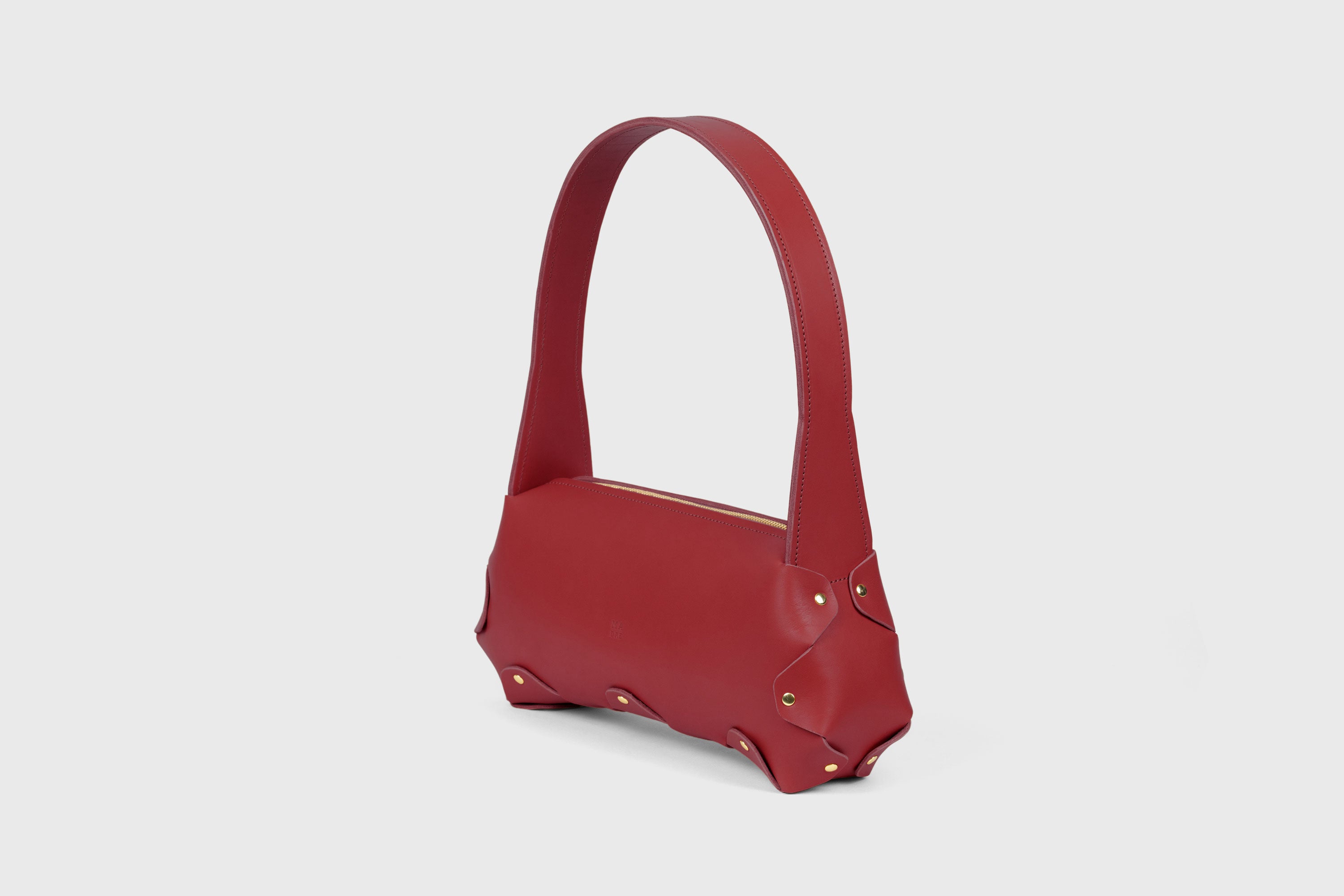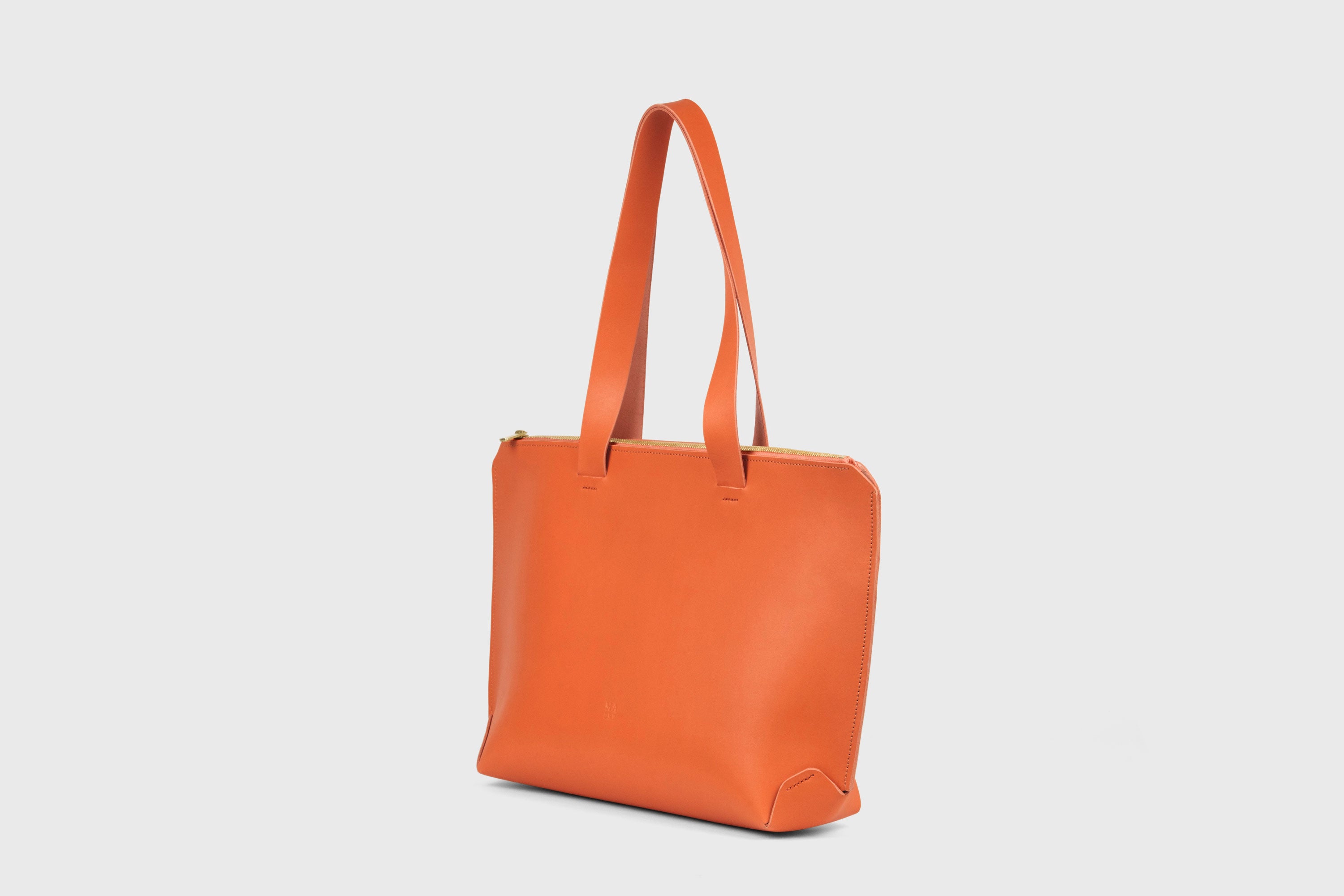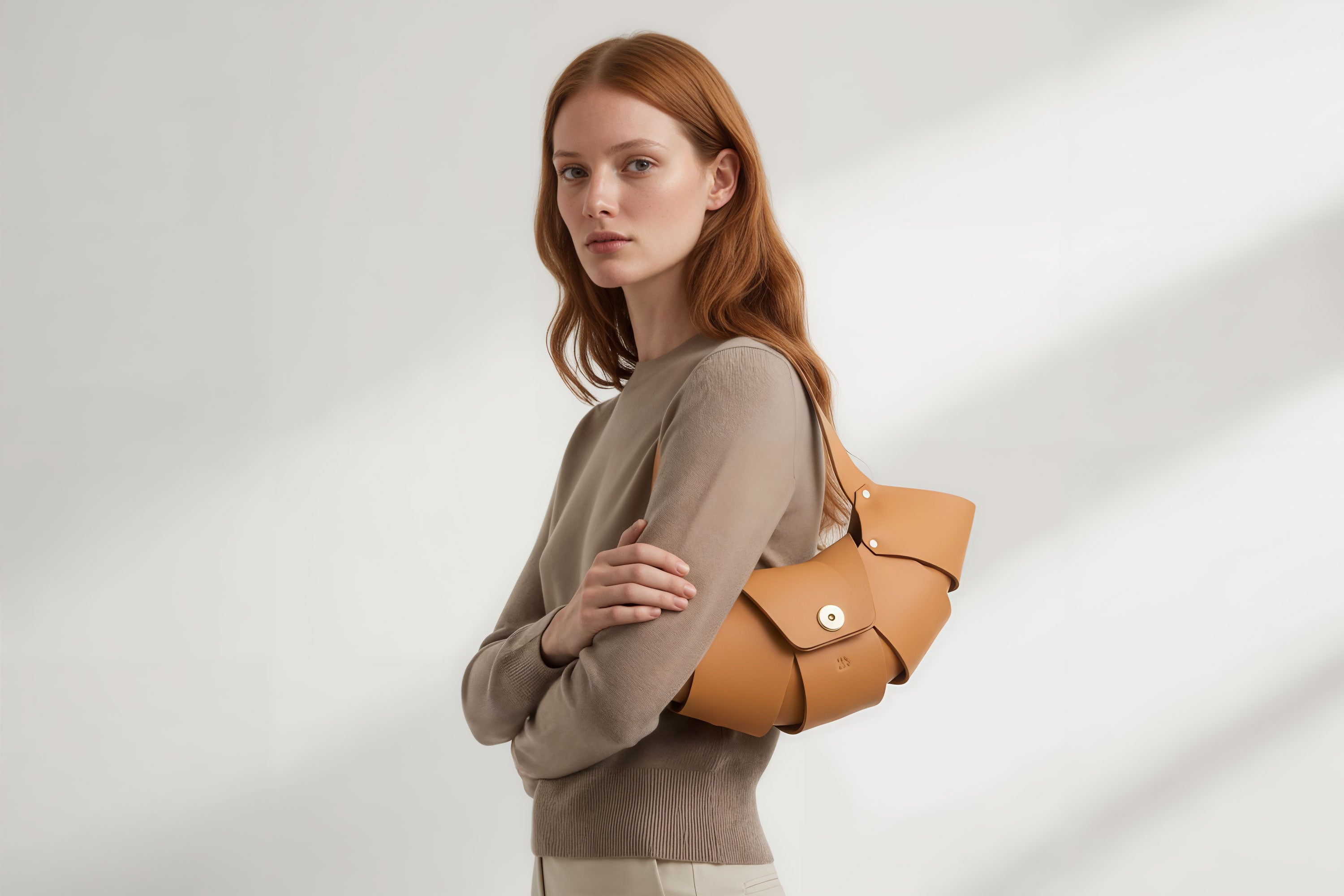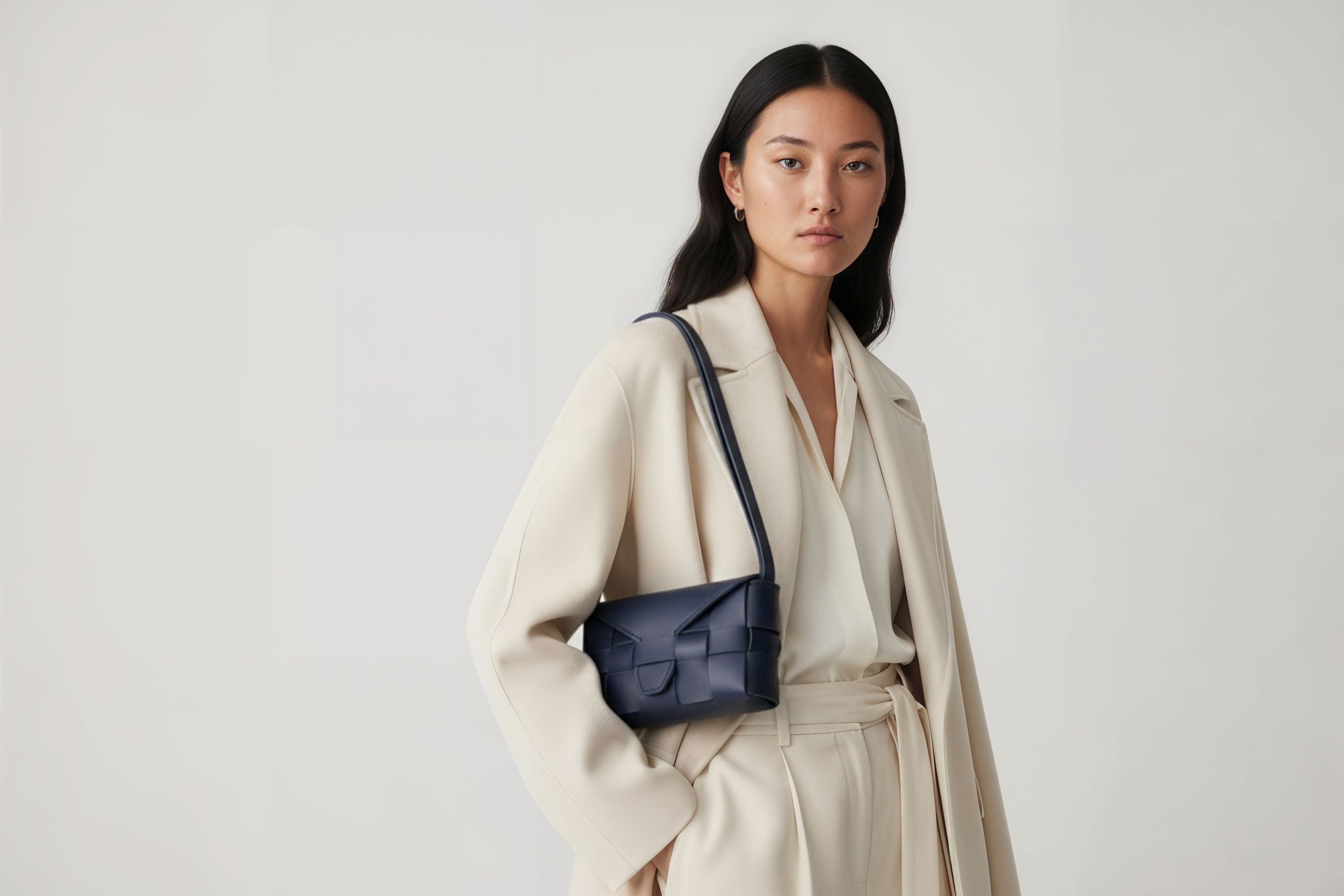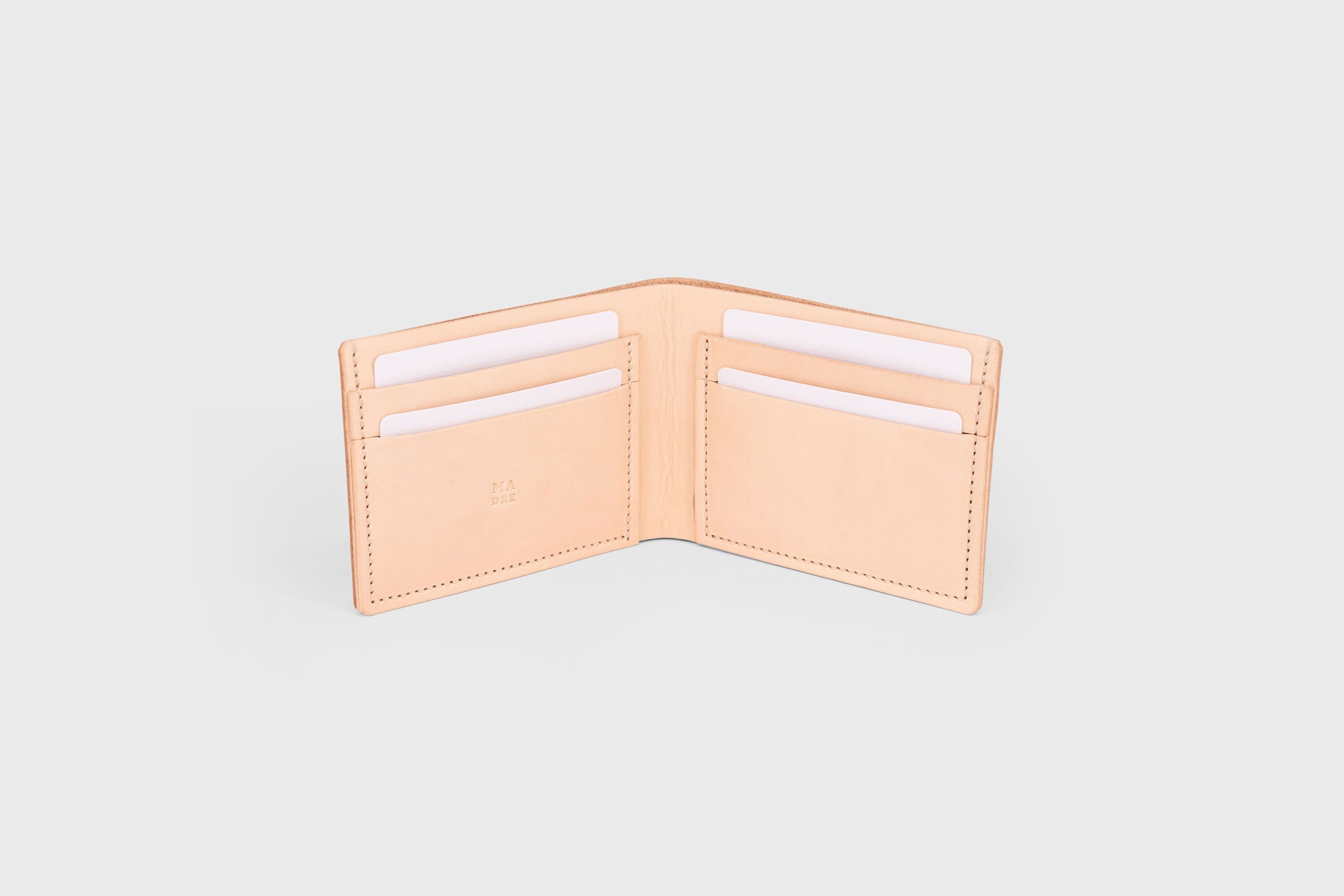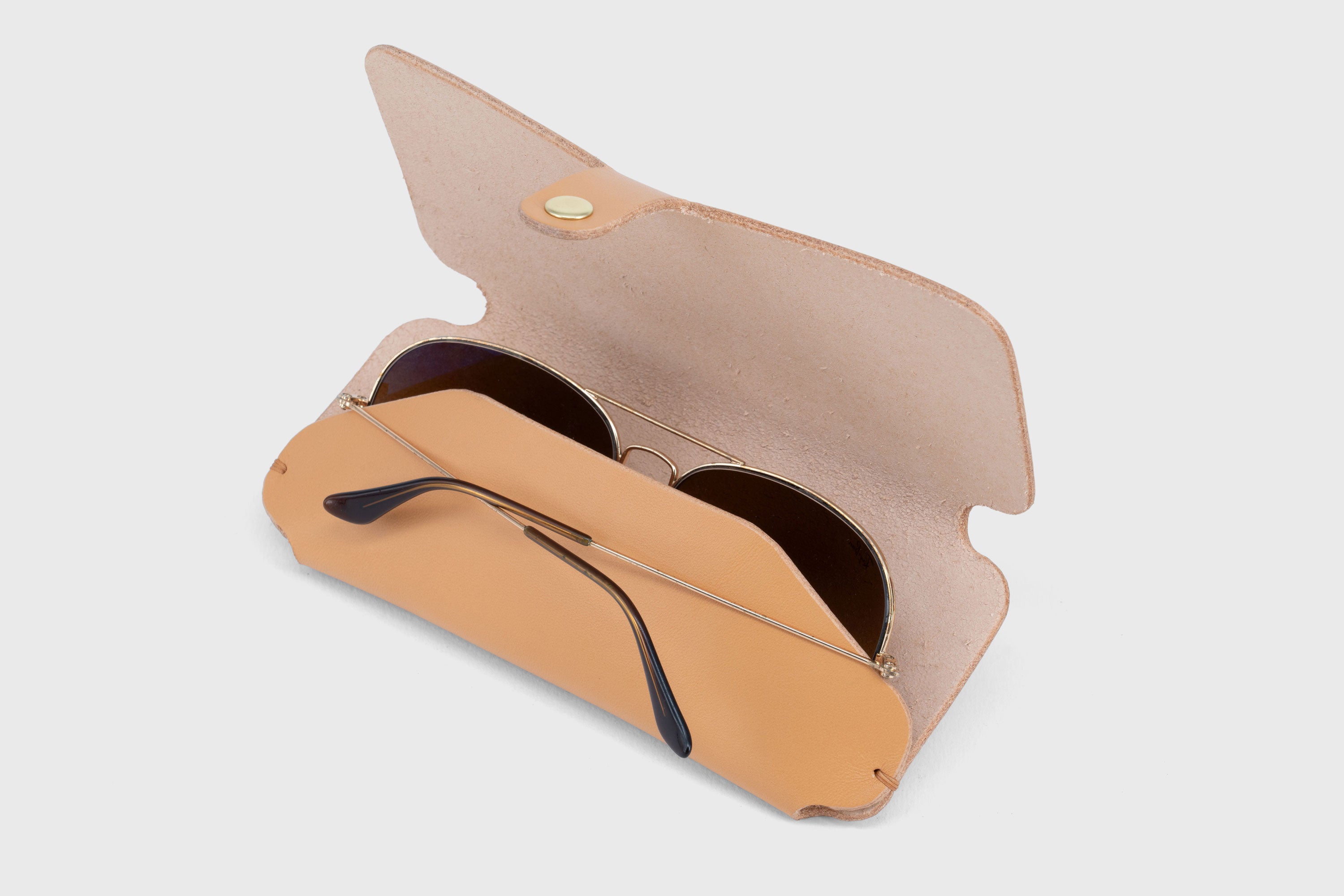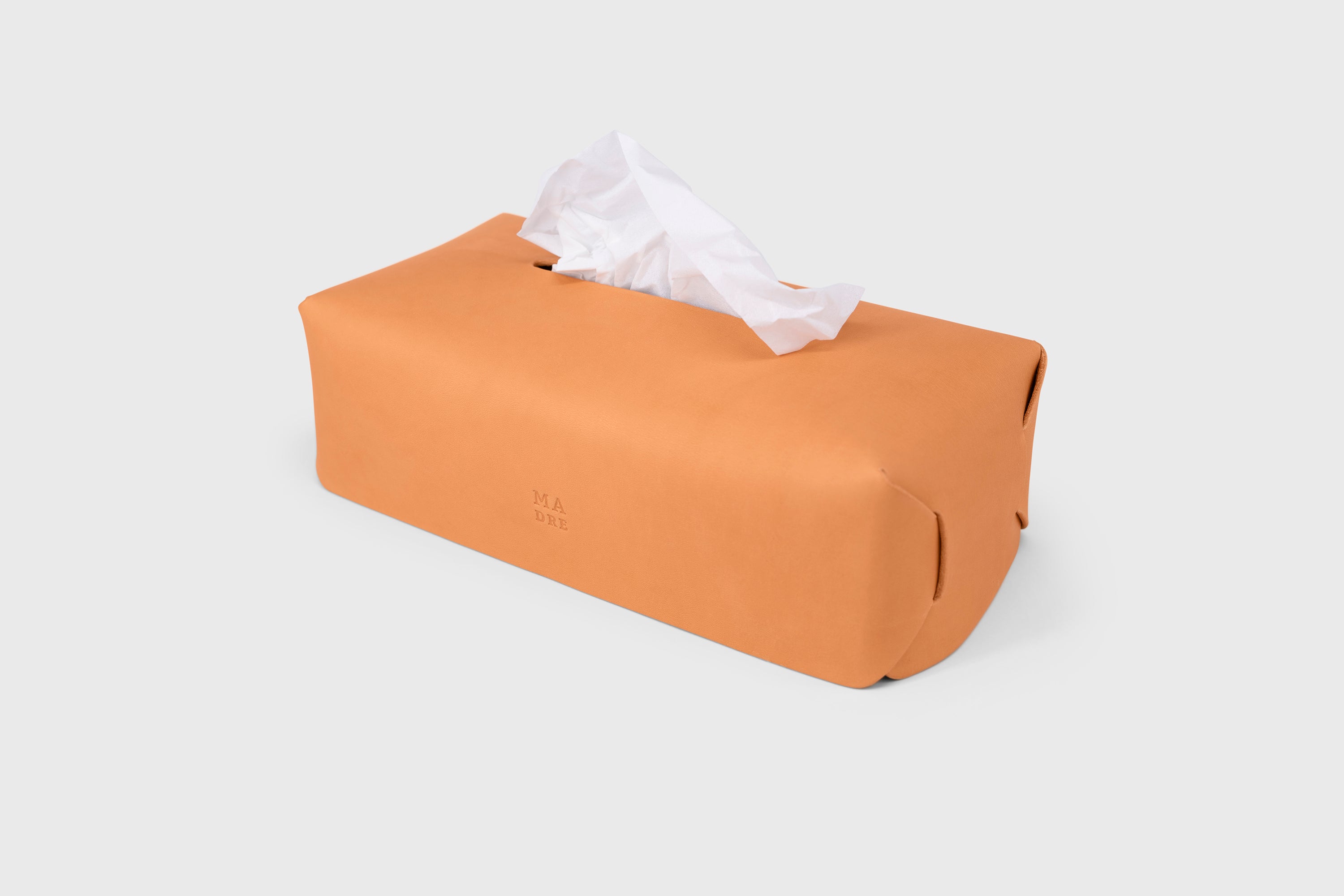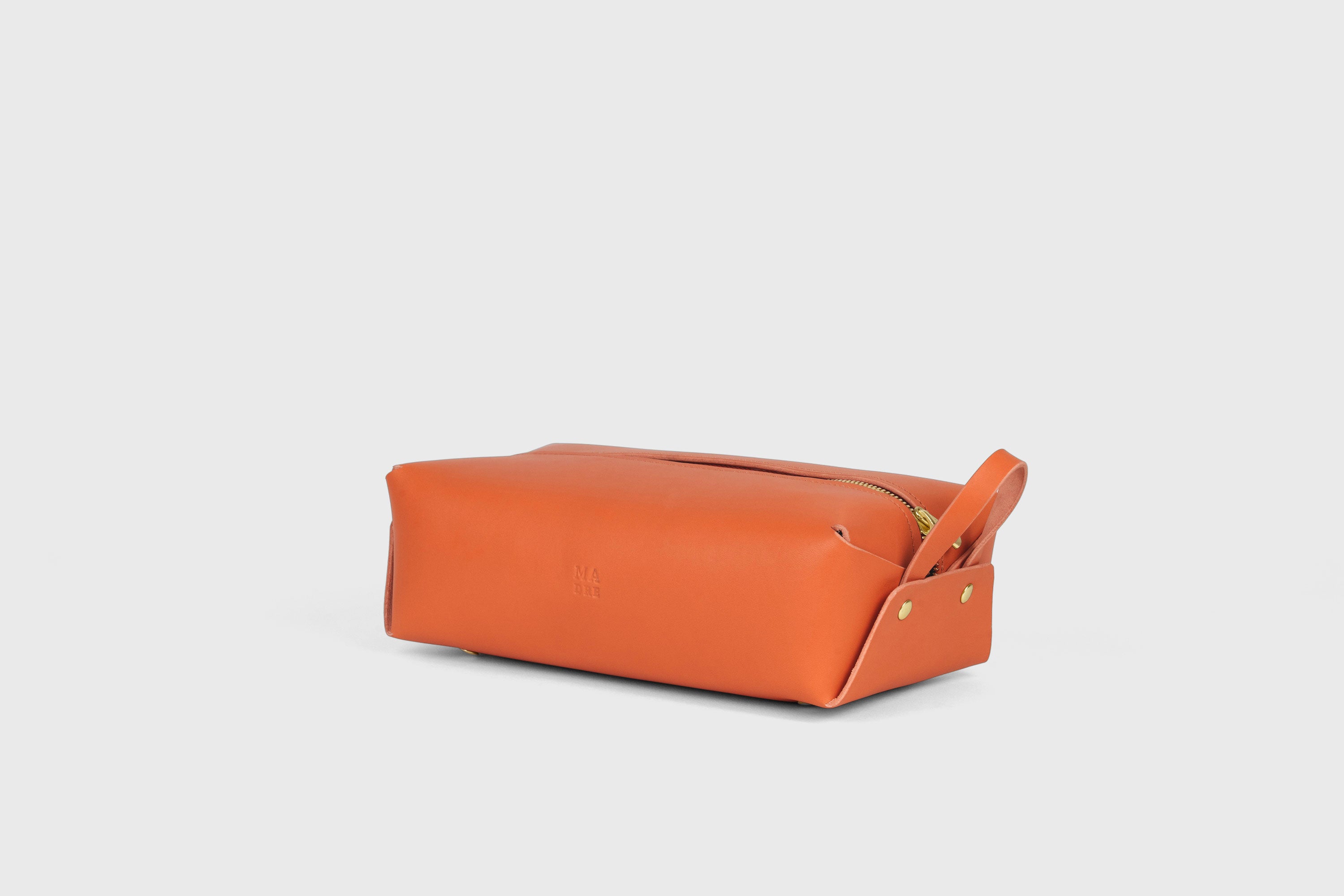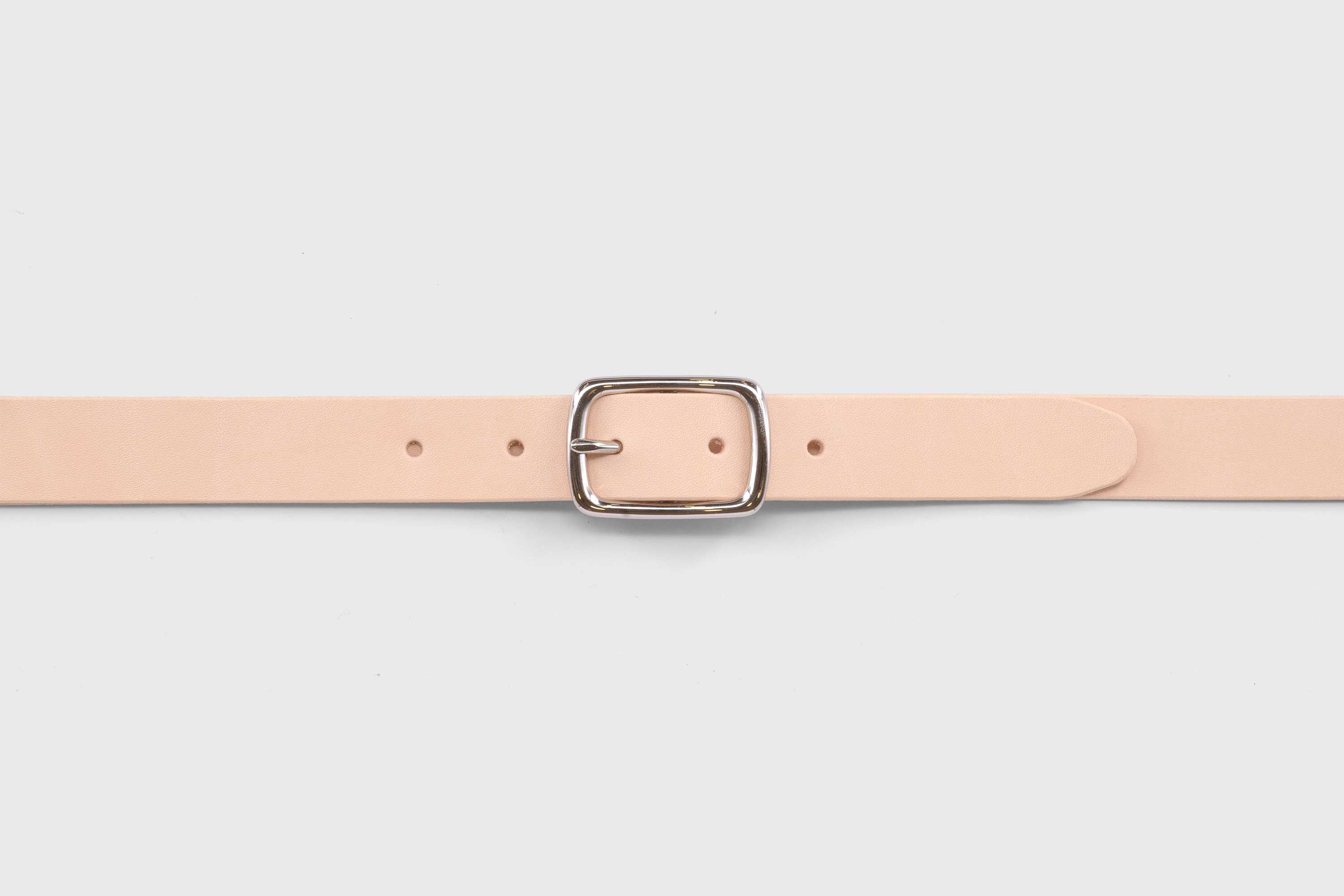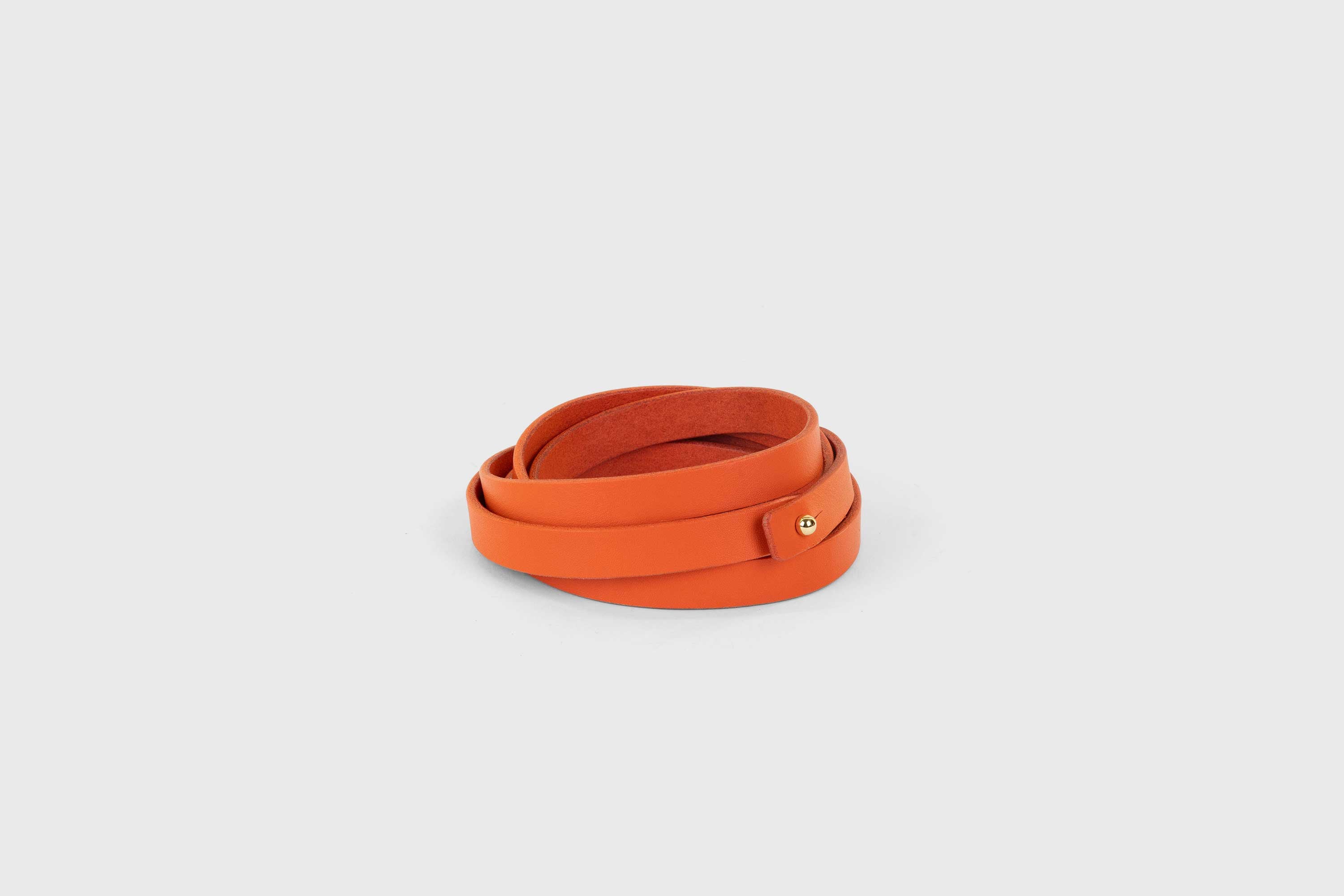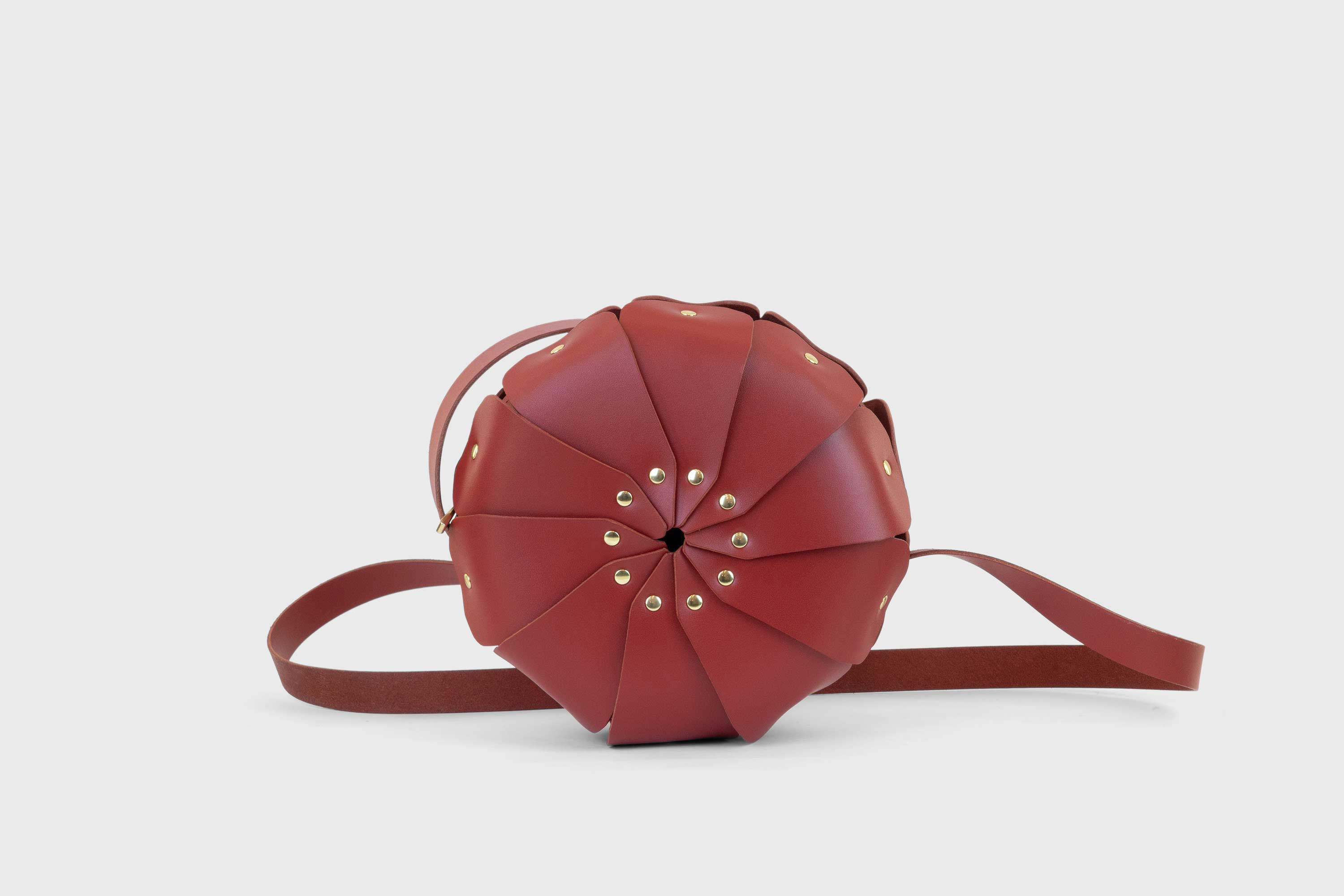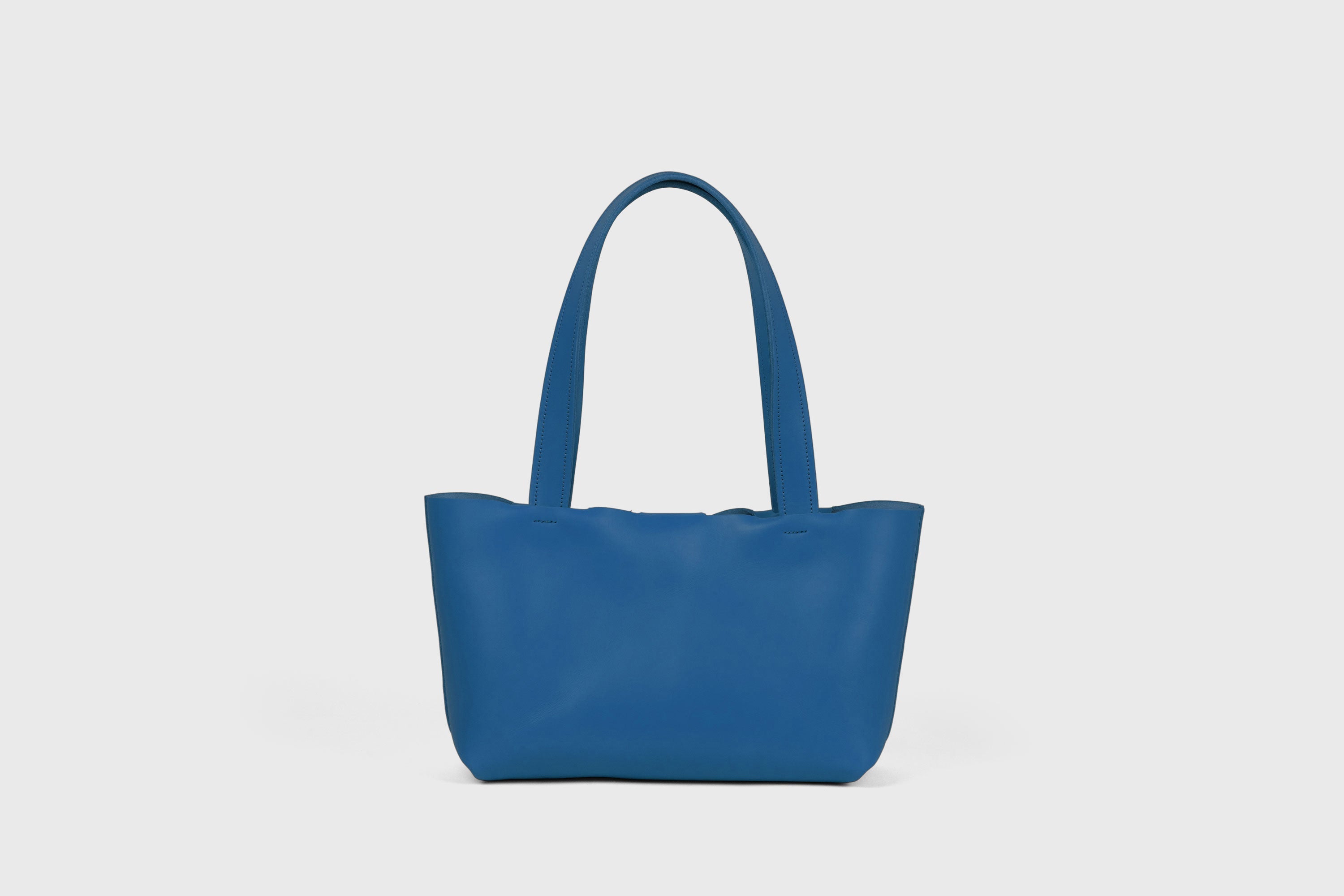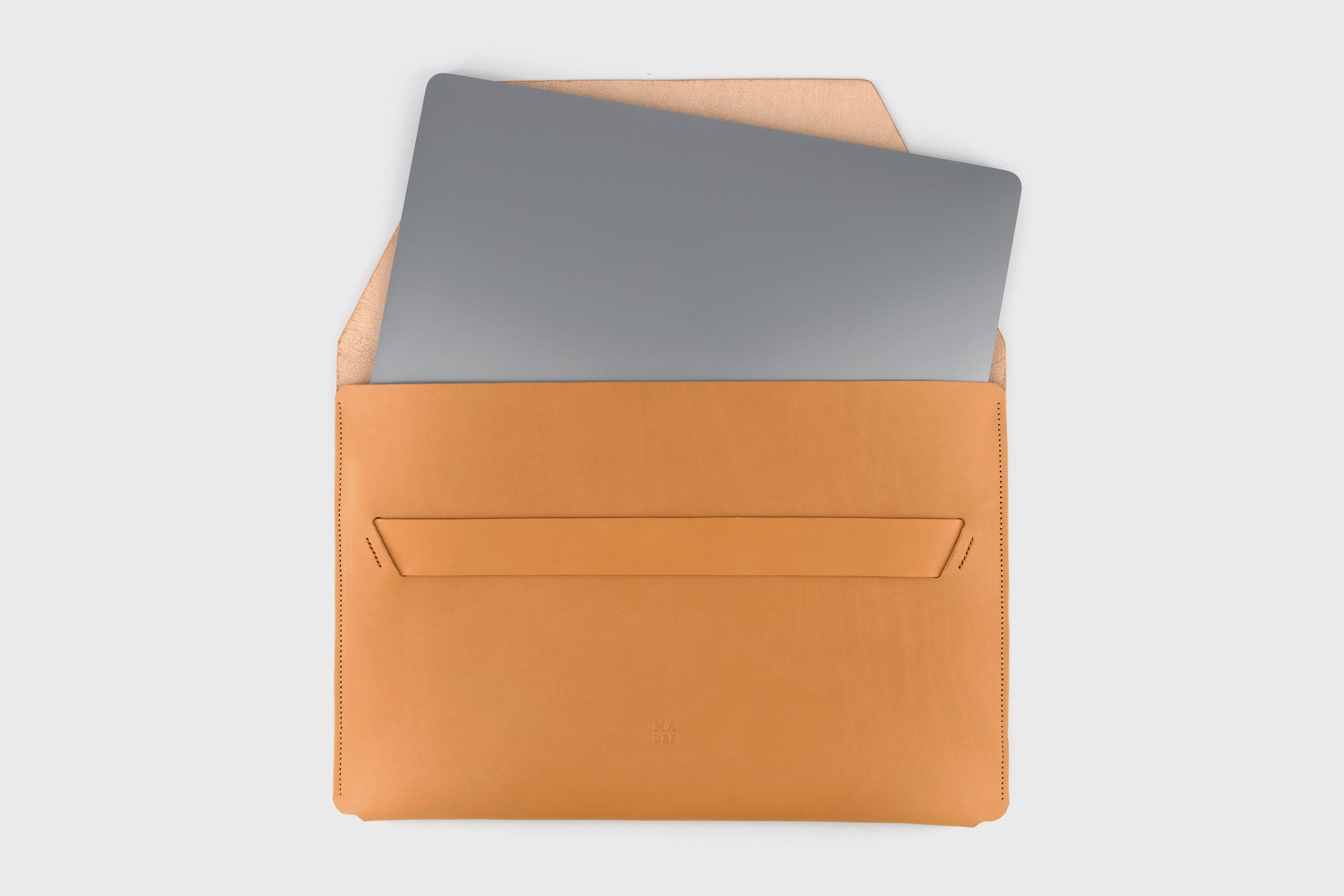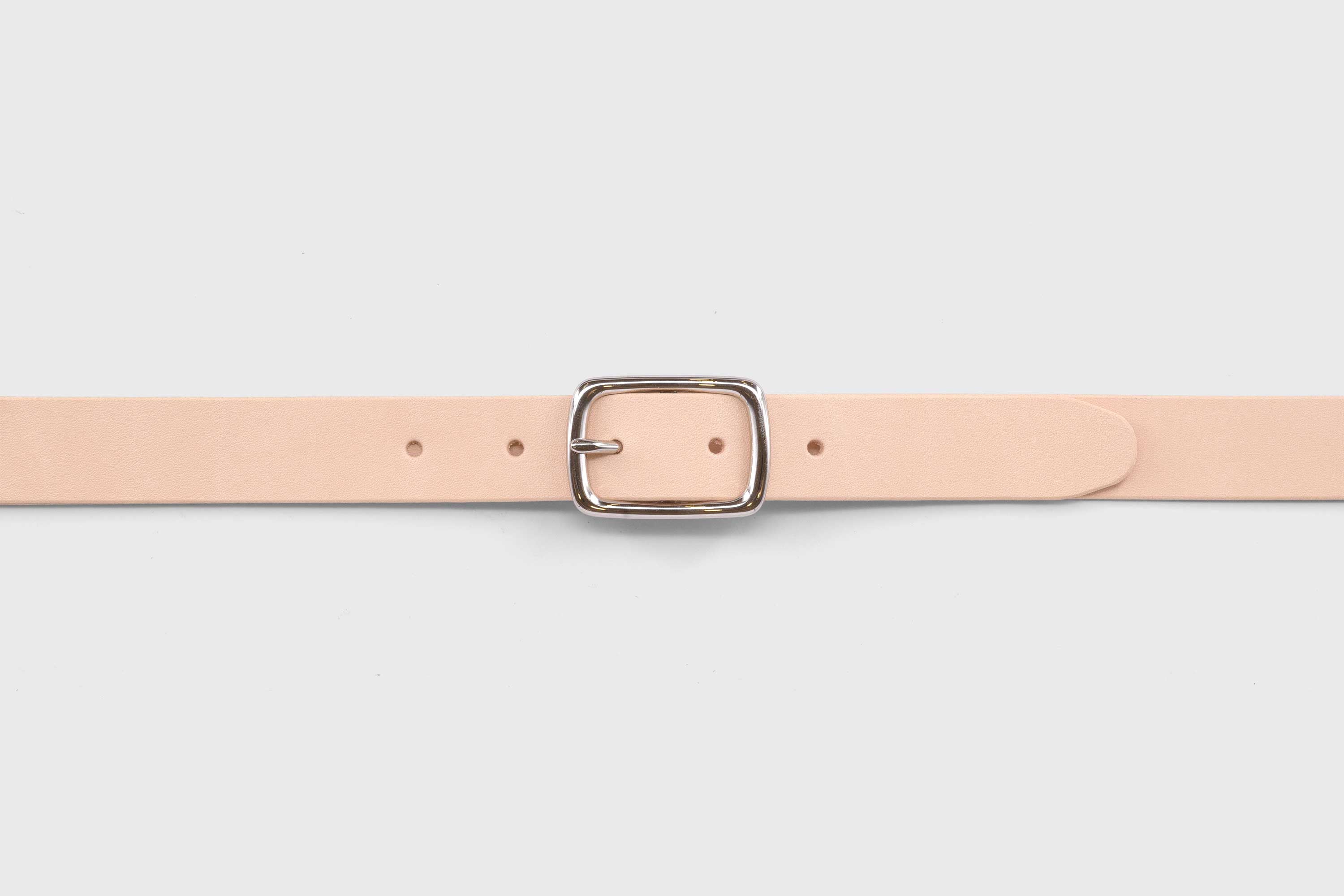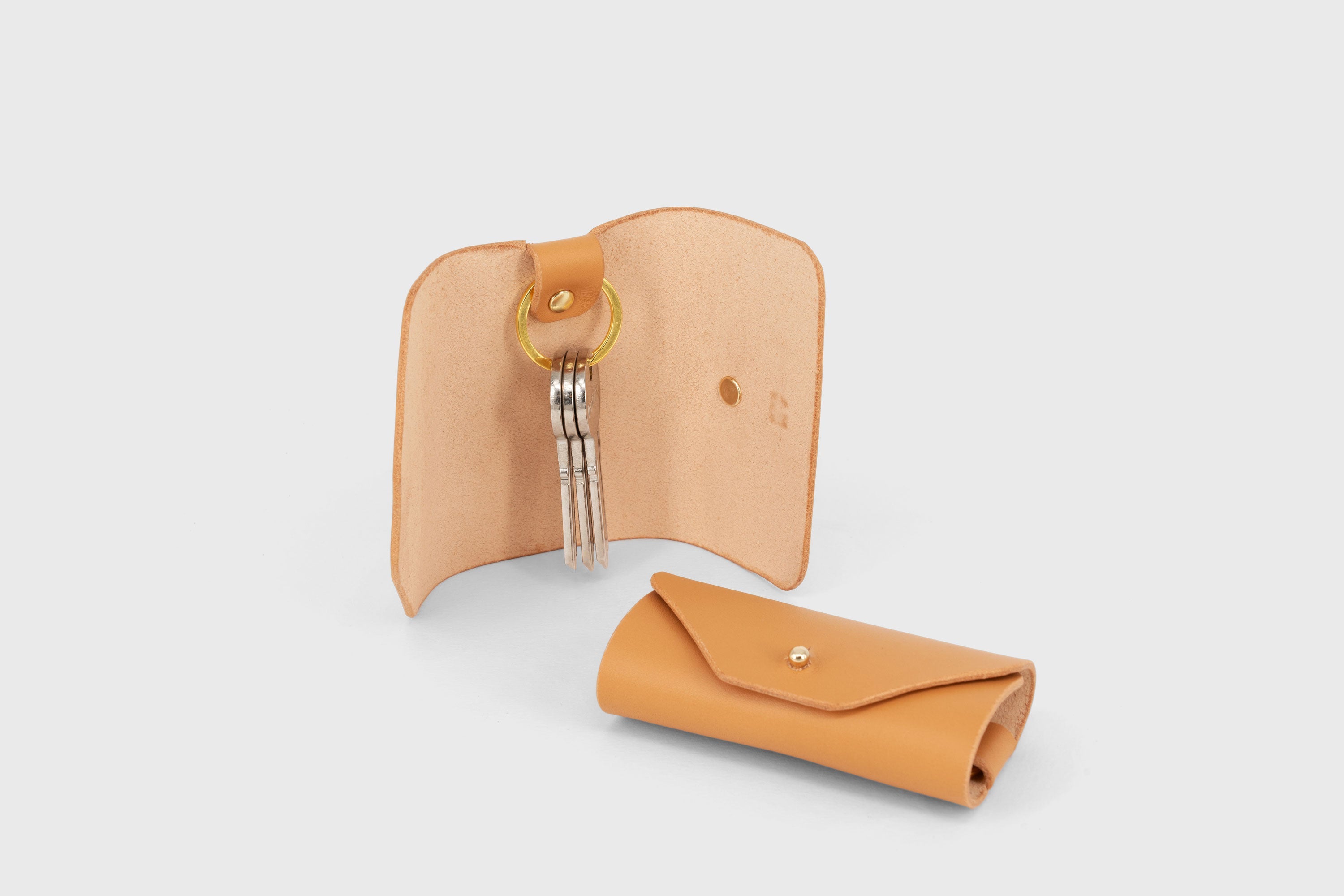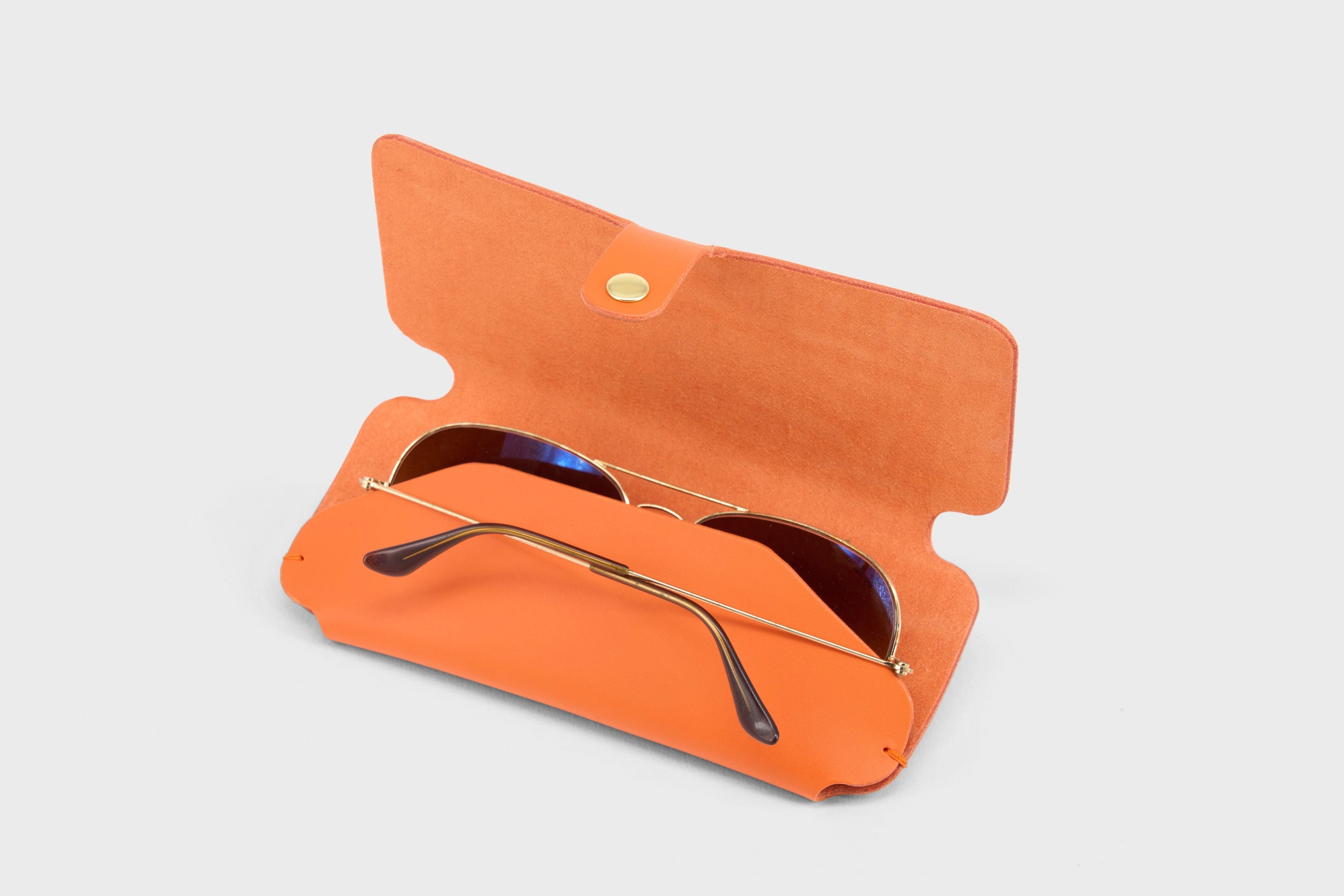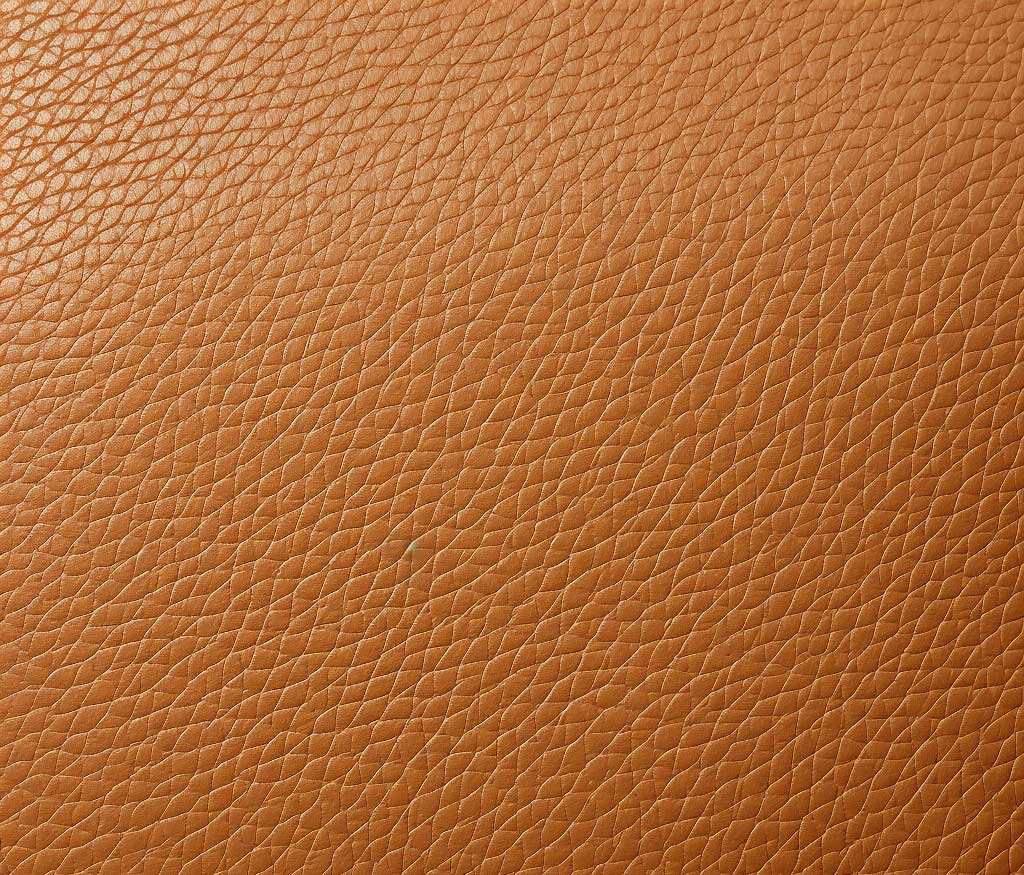
Nubuck Leather Unveiled: Insights and Comparisons to Full Grain Vegetable Tanned Leather
In the world of leather goods, the type of leather used plays a pivotal role in determining the quality, durability, and aesthetics of the final product. There are numerous types of leather available, each with its own distinct characteristics and appeal. One such type is Nubuck leather, renowned for its soft feel and sueded surface.
In this comprehensive guide, we explore the nitty-gritty of Nubuck leather — how it's made, its characteristics, its uses, and more. We also delve into the critical comparison between Nubuck leather and the full grain vegetable tanned leather that we at Atelier Madre are deeply committed to using. Our goal? To empower you with knowledge, so you can make informed decisions when choosing your next leather product. Let's get started!
What is Nubuck Leather?
Nubuck leather is a unique type of leather that's cherished for its luxuriously soft and velvety texture. Unlike other leathers that are smooth and shiny, Nubuck boasts a matte finish with a slightly sueded surface that's pleasing to the touch. This distinct texture is achieved through a process called 'sanding' or 'buffing', where the top grain - or outer layer - of the leather is lightly abraded to create a nap of short protein fibers.
But Nubuck isn't just about the touch - it's also about the visual appeal. This type of leather offers a depth and richness of color that's not often seen in other leathers, giving products made from Nubuck a distinctive, high-end look.
Typically, Nubuck leather is used in the production of various items where softness and comfort are highly valued, including high-quality furniture, handbags, shoes, and other fashion accessories. However, this softness does not come at the cost of durability - Nubuck is still a strong and resilient type of leather. That said, it does require a bit more care and maintenance compared to other types of leather, thanks to its unique surface finish.
The Making of Nubuck Leather
Creating Nubuck leather involves a meticulous process that starts with selecting high-quality raw hides. Here's an in-depth look at the steps involved in its production:
Selection of Hides: The first step involves selecting top-quality hides. This is crucial because any imperfections on the hide will be noticeable on the finished Nubuck leather due to its lightly buffed surface.
Preparation and Tanning: The selected hides are then cleaned and prepared by removing hair and any remaining flesh. After the hides are cleaned, they undergo a tanning process. There are various tanning methods, but the most common for Nubuck leather involves chromium salts, which make the leather more resilient and less prone to decomposition.
Dyeing: After tanning, the hides are dyed. Nubuck leather can be dyed in a wide array of colors. The dyeing process plays a significant role in enhancing the aesthetic appeal of the leather.
Buffing: The distinguishing characteristic of Nubuck leather, its soft and velvety surface, is achieved in the buffing process. The top layer of the hide is sanded or buffed to create a nap of short protein fibers. This is done with great care to avoid damaging the leather while achieving the desired texture.
Finishing: After buffing, the leather undergoes a finishing process. This may include applying a protective sealant to help protect the surface from stains and water damage. Despite this, Nubuck leather will still require careful handling and regular maintenance to keep its unique look and feel.
So, there you have it - the journey from raw hide to luxurious Nubuck leather. It's a labor-intensive process, but the end result is a premium leather that offers a unique blend of softness, durability, and aesthetic appeal.
Characteristics of Nubuck Leather
Nubuck leather is renowned for its distinct properties that set it apart from other types of leather. From its velvety texture to its aging process, let's delve into the unique characteristics of Nubuck leather.
Texture: Nubuck leather is best known for its soft and velvety texture. This unique feel is achieved by buffing the top grain of the leather to produce a slight nap of short protein fibers. The result is a plush surface that is smooth to the touch, making it a luxurious choice for many products.
Durability: Despite its delicate texture, Nubuck is incredibly durable. It's made from the outer layer of the hide, which is the strongest part, and the buffing process does not compromise its strength. Hence, Nubuck leather products are robust and long-lasting when properly cared for.
Breathability: Nubuck's porous surface makes it more breathable than many other types of leather. This makes it a popular choice for footwear, as it can help to keep the feet cool and reduce sweating. However, this porosity also means it's more susceptible to water damage and staining, which necessitates the use of protective treatments and careful maintenance.
Aging: Nubuck leather ages gracefully over time. Like other genuine leathers, it develops a patina – a soft sheen that forms on the surface due to oxidation over time. This patina enhances the aesthetic appeal of the leather and adds character to Nubuck products, making them more desirable the longer they're used.
Maintenance: Nubuck requires more maintenance than some other types of leather due to its soft, porous surface. Regular cleaning, careful handling, and the application of protective sprays can help to maintain its appearance and prolong its lifespan.
These unique characteristics make Nubuck leather a premium material. Its luxurious texture, combined with durability and breathability, makes it a versatile choice that can add a touch of elegance and comfort to various products.
Nubuck Leather Care
Nubuck leather, while a robust and durable material, needs special care to keep it in top-notch condition. Here are some practical tips on how to care for and maintain your Nubuck leather products:
Regular Cleaning: Nubuck leather should be cleaned regularly with a nubuck cleaning cloth or a nubuck brush to remove dust and light dirt. This helps to maintain the texture and prevents the pores from clogging.
Deep Cleaning: For more ingrained dirt, use a specialized nubuck cleaner. Always test on a small, discreet area first to ensure it doesn't alter the color or texture of the leather.
Stain Removal: In the case of spills, blot immediately with a clean, dry cloth to prevent the liquid from soaking in. For stubborn stains, a nubuck cleaning gum can be gently rubbed over the spot.
Conditioning: Nubuck leather can become dry over time. To prevent this, condition it periodically with a product specifically designed for nubuck leather. Conditioning will help to keep the leather supple and prolong its lifespan.
Waterproofing: As nubuck leather is susceptible to water damage, consider using a waterproofing spray to protect it. This should be done when the item is new and repeated periodically, especially if the item is frequently exposed to wet conditions.
Storage: When not in use, store nubuck items in a cool, dry place away from direct sunlight, which can cause the color to fade. Consider using a breathable dust bag to protect the item from dust and scratches.
Professional Cleaning: If your nubuck item becomes severely stained or dirty, it's best to seek professional help. Leather cleaning experts have the tools and expertise to clean and restore nubuck leather without causing further damage.
Remember, the key to maintaining the beauty and durability of your nubuck leather items is regular care and immediate attention to spills and stains. With these tips, your nubuck leather products can retain their unique elegance and offer you many years of use and enjoyment.
How to Clean Nubuck Leather
Caring for Nubuck leather involves a certain level of diligence, as it requires more upkeep than other types of leather due to its soft, velvety texture. Here are some steps to help you clean and maintain your Nubuck leather items:
Regular Dusting: Use a dry cloth or a special Nubuck cleaning cloth to gently wipe down your Nubuck leather items. This should be done regularly to prevent the buildup of dirt and grime.
Nubuck Brush: A Nubuck cleaning brush is a critical tool for maintaining Nubuck leather. It can help to restore the leather's texture if it becomes flattened or shiny, as well as remove dried stains and spots. When using the brush, make sure to brush in different directions to clean thoroughly and maintain the velvety appearance.
Stain Removal: For liquid spills, immediately blot with a clean, dry cloth to soak up as much of the spill as possible. Avoid rubbing the stain, as it can cause it to spread. Once dry, use a Nubuck cleaning brush to restore the nap of the leather.
Deep Cleaning: For more persistent stains or overall grime, a specialized Nubuck cleaning product can be used. Always test the cleaner on a hidden area first to ensure it doesn't alter the color or texture of the leather.
Protection Spray: To offer some level of protection against water and stains, you can use a Nubuck protection spray. Again, always test on a hidden area first to check for any adverse effects.
Professional Cleaning: If your Nubuck leather item is heavily stained or damaged, consider seeking help from a professional leather cleaning service.
Remember, Nubuck leather is unique in its care requirements, and the key to keeping it looking its best is regular, gentle care and prompt attention to any spills or stains.
The Advantages and Disadvantages of Nubuck Leather
Just like any material, Nubuck leather comes with its own set of advantages and disadvantages. Here's a brief breakdown:
Advantages of Nubuck Leather:
Luxurious Feel: Nubuck is known for its soft, velvety surface that's incredibly pleasant to touch. This luxurious feel makes it highly desirable for high-end goods like designer handbags, shoes, and furniture.
Aesthetically Pleasing: Nubuck has a uniform and clean appearance due to the buffing process that removes the outer layer of the hide. The result is a leather product that has a consistent color and texture throughout, adding to its visual appeal.
Durability: Despite its soft surface, Nubuck is quite durable due to its origin as a top-grain leather. It can handle regular use without damage and lasts for a significant period if properly cared for.
Disadvantages of Nubuck Leather:
High Maintenance: Nubuck leather requires consistent care to maintain its good looks. It can easily get stained and absorb liquids due to its porous surface. Regular cleaning and application of a protective spray are necessary to maintain the quality of the leather.
Cost: Nubuck is one of the more expensive types of leather due to the processing it requires. The cost can be a significant consideration for many consumers.
Prone to Fading and Wear: Over time, Nubuck leather may show signs of wear more readily than other types of leather. It can also fade if consistently exposed to direct sunlight.
Sustainability Concerns: Like all types of leather, Nubuck's production process can have a significant environmental impact, particularly if not responsibly sourced and tanned.
The decision to choose Nubuck leather depends on one's preference, usage needs, and budget. At Atelier Madre, we prefer full grain vegetable-tanned leather, which offers outstanding durability and ages beautifully, while also being a more sustainable choice.
The Waterproof Qualities of Nubuck Leather
When it comes to leather and water, it's a delicate relationship. As for Nubuck leather, like most leathers, it is not naturally waterproof. Nubuck's soft and porous surface is especially susceptible to absorbing water, leading to potential damage and staining.
Nubuck leather has an open-pore structure that can absorb liquids quickly. If exposed to water, the moisture can cause the leather to swell and change shape. It can also create unsightly water spots on the surface that are tough to remove. Over time, continued exposure to water can lead to hardening and cracking of the Nubuck.
However, this doesn't mean Nubuck leather items are entirely off-limits in damp conditions. Several products on the market can improve the water resistance of Nubuck leather. Waterproofing sprays are commonly used for this purpose. These sprays create a protective barrier on the leather's surface that repels water while still allowing the material to breathe.
Keep in mind that while waterproofing sprays can enhance Nubuck's resistance to water, they can't make it completely waterproof. It's still important to wipe off any water or spills as soon as possible and avoid excessive exposure to wet conditions.
Furthermore, repeated application of waterproofing treatments may alter the texture and color of Nubuck leather over time. Always test these products on a small, hidden area first to ensure they won't adversely affect the appearance of your item.
At Atelier Madre, we choose to work with full grain vegetable tanned leather because of its superior durability, aging properties, and natural resistance to water. However, like Nubuck, it also benefits from proper care and protection to maintain its quality over time.
The Most Common Uses for Nubuck Leather
Due to its unique characteristics, Nubuck leather has been used extensively in various applications across different industries. Here are some of the most common uses for Nubuck leather:
Footwear: Nubuck leather is a popular choice for shoes, especially high-end sneakers and outdoor footwear, because of its soft texture, durability, and breathability. The brushed surface of Nubuck provides a certain level of water resistance and stands up well to rough outdoor conditions.
Furniture: Nubuck leather can often be found in the upholstery of high-end furniture, especially sofas and armchairs. Its velvety texture, luxurious look, and comfort make it an appealing option for interiors.
Bags and Accessories: Due to its aesthetic appeal and durability, Nubuck leather is often used to make purses, handbags, wallets, belts, and other fashion accessories.
Automotive Industry: High-end vehicles may feature Nubuck leather in their interior for a luxurious touch. It's used on seats, steering wheels, and dashboard coverings.
Clothing: Some types of jackets, particularly those designed for outdoor use, are made of Nubuck leather because of its toughness and stylish appearance.
While Nubuck leather certainly has its place in various industries, at Atelier Madre, we prioritize full grain vegetable tanned leather for its superior longevity, sustainability, and the beautiful patina it develops over time. By choosing our products, you're investing in pieces that stand the test of time, both in terms of style and durability.
Understanding the Difference Between Nubuck Leather and Suede Leather
The world of leather can indeed seem complex, with various types and finishes to choose from. Among the softer, velvety leather types, Nubuck and Suede often come up for comparison. Despite their similar feel and appearance, these are distinct types of leather, each with unique characteristics and uses.
Origin of the Leather
The primary difference between Nubuck and Suede lies in the part of the hide they come from. Nubuck leather is made from the outer side of a hide, known as the top-grain. This part of the hide is stronger and more durable.
On the other hand, Suede is made from the inner layer of a hide, often referred to as the "flesh side". It's softer and less durable as compared to the top-grain.
Manufacturing Process
In terms of the manufacturing process, both Nubuck and Suede undergo a similar 'buffing' process. However, Nubuck is buffed on the grain side to create a slight nap of short protein fibers, resulting in a velvety surface. This process also removes imperfections, providing Nubuck with a more uniform appearance.
Suede, meanwhile, is buffed on the flesh side of the hide. The result is a noticeably longer nap, giving it a fuzzier texture compared to Nubuck.
Durability and Maintenance
Because Nubuck is crafted from the top-grain of the hide, it is more durable and resistant to wear than Suede. It can withstand heavier use, which is why it's commonly found in items like shoes and furniture.
Suede, being less durable, requires more careful handling. It is more prone to staining and damage from water and other liquids. However, its softness and flexibility make it a popular choice for clothing and delicate accessories.
Aesthetic
Both Nubuck and Suede have a unique, attractive aesthetic that's hard to replicate. Nubuck has a slightly more rugged look with a velvety sheen, while Suede has a softer, matte appearance.
Both materials can add a touch of luxury and comfort to products, but at Atelier Madre, we believe that the sustainability, durability, and timeless elegance of full grain vegetable-tanned leather make it the superior choice for our handcrafted bags and accessories.
Nubuck vs. Oiled Leather: A Detailed Comparison
Nubuck and oiled leather are both unique types of leather, each with its own distinct characteristics, uses, and care requirements. Here's a detailed comparison between the two:
Origin and Production: Nubuck is typically made from top-grain cowhide that is sanded or buffed on the grain side to create a velvety, suede-like surface. Oiled leather, on the other hand, is a type of leather to which a greasy or oily finish has been applied. The oil saturates the fibers of the leather, making it softer and more flexible.
Texture and Appearance: Nubuck leather has a soft, velvety texture and a uniform appearance due to the sanding or buffing process. It's often dyed, which allows for a range of colors. Oiled leather has a rugged and natural look, with a slightly shiny, waxy finish. The oiling process highlights the natural grain and imperfections of the leather, contributing to its character.
Durability: Both Nubuck and oiled leathers are durable, but the oil in oiled leather provides an extra layer of protection against water and stains. Nubuck leather, while sturdy, is more susceptible to staining and water damage due to its porous surface.
Care: Nubuck leather requires special care to maintain its appearance, including regular brushing to keep the nap raised and using a specific Nubuck cleaner for stains. Oiled leather, on the other hand, benefits from periodic oiling to replenish the oils and maintain its softness and protective qualities.
Uses: Both types of leather are used in making shoes, furniture, bags, and accessories, but their different aesthetics can influence the style and feel of the end product.
At Atelier Madre, while we appreciate the unique characteristics of both Nubuck and oiled leather, we remain committed to using full grain vegetable tanned leather. We believe in the longevity, sustainability, and beauty that full grain vegetable tanned leather brings, creating pieces that age beautifully and last a lifetime.
Nubuck Leather vs. Full Grain Leather
When selecting leather products, two types often come into consideration: Nubuck leather and Full Grain leather. Both have unique attributes that cater to different tastes and uses. Here's a comparison of Nubuck leather and Full Grain leather to better understand their differences and why one might be chosen over the other.
Origin & Production:
Nubuck Leather: Nubuck is a type of top-grain leather that has been sanded or buffed on the grain side to give a slight nap of short protein fibers, resulting in a velvet-like surface. It's highly durable and resistant to wear.
Full Grain Leather: Full grain leather is the highest quality of leather. It's made from the outermost layer of animal hide and retains all of the natural imperfections and textures, making each piece unique.
Texture & Appearance:
Nubuck Leather: Nubuck has a soft, velvety surface and a luxurious feel. It can be dyed in various colors, allowing for a broad range of aesthetically pleasing goods.
Full Grain Leather: Full grain leather has a smooth and slightly shiny surface. Over time, it develops a patina, a sheen that adds character and beauty to the leather.
Durability:
Nubuck Leather: Although nubuck is durable and resistant to wear, it's more susceptible to staining and soiling due to its open-pore structure.
Full Grain Leather: Full grain leather is extremely durable and ages beautifully. It's known to last for decades with proper care, often outliving its owner.
Care & Maintenance:
Nubuck Leather: Nubuck requires regular cleaning to prevent dust and dirt from settling into its nap. It also needs periodic conditioning and waterproofing.
Full Grain Leather: Full grain leather requires less maintenance. Regular dusting and occasional conditioning to prevent drying out are typically all it needs.
Atelier Madre's Preference:
At Atelier Madre, we have a preference for full grain leather, particularly the vegetable-tanned variety. It aligns with our commitment to sustainability and provides the superior durability and timeless elegance that our customers value. It may not have the velvet-like touch of Nubuck, but the way Full Grain leather ages, growing more beautiful and distinctive over time, is something truly special.
In the end, the choice between Nubuck and Full Grain leather depends on personal preference and the intended use of the item. Both types of leather offer unique characteristics that make them worthy of consideration.
Sustainability and Nubuck Leather
The subject of sustainability is increasingly becoming a focal point in the leather industry, and Nubuck leather is no exception. To fully understand the environmental impact of Nubuck leather production, we must delve into its creation process and consider its long-term durability.
Resource Intensive Production:
The production of Nubuck leather is resource-intensive. It involves the use of considerable amounts of water and chemicals in the tanning and finishing processes. These chemicals can have detrimental effects on the environment if not managed correctly. For instance, chromium salts, commonly used in the tanning process, can be toxic and harmful to aquatic life if discharged untreated into water bodies.
Waste Generation:
The sanding process that gives Nubuck its characteristic velvety texture also results in the creation of waste. The leather dust and scraps produced in this stage need to be appropriately disposed of or repurposed to minimize waste generation.
Long-Term Durability:
On the positive side, Nubuck leather is quite durable. Its longevity can offset the environmental impact of its production to some extent because a product that lasts longer reduces the need for replacement and therefore lowers resource use over time.
Care and Maintenance:
Nubuck leather also requires regular maintenance using specialized cleaning and protective products, some of which may contain chemicals that have an environmental impact.
At Atelier Madre, we're conscious of the environmental implications of the materials we use. That's why we opt for full grain vegetable-tanned leather for our products. Vegetable tanning is an age-old tradition that uses organic materials, such as tree bark, instead of toxic chemicals. Full grain leather also boasts excellent durability, allowing our customers to enjoy our products for many years and reducing the overall environmental footprint.
In conclusion, while Nubuck leather does have some environmental considerations, consumer behavior plays a significant role in its sustainability. Proper care and maintenance of Nubuck leather products can extend their lifespan, and responsibly disposing of them at the end of their life can reduce environmental impact.
Why Atelier Madre Chooses Full Grain Vegetable Tanned Leather
At Atelier Madre, we're more than just a brand – we are a commitment to sustainability, quality, and time-honored craftsmanship. Our preference for Full Grain Vegetable Tanned Leather over Nubuck leather is a testament to this commitment. Here's why:
Sustainability:
Vegetable tanning, used to create our Full Grain Leather, is an age-old tradition that respects both the environment and human health. Unlike the chemical-intensive process used to produce Nubuck and other types of leather, vegetable tanning uses organic materials, primarily tree bark. This method reduces the amount of harmful waste and contributes less to pollution, making it a more eco-friendly option.
Durability and Aesthetics:
Full grain vegetable tanned Leather is the highest quality of leather available. It retains the complete grain of the hide, which not only ensures superior durability but also lends a unique character to each piece. Over time, full grain leather develops a beautiful patina that adds richness and depth to the product, something that cannot be achieved with Nubuck leather.
Transparency and Ethics:
Our choice of Full Grain Vegetable Tanned Leather also aligns with our mission of transparency and ethical sourcing. We prioritize materials and methods that are not only kind to the environment but also respect animal welfare. By opting for vegetable-tanned full-grain leather, we ensure that our products are a reflection of these values.
Craftsmanship:
Full Grain Vegetable Tanned Leather is a tribute to traditional craftsmanship. The process of vegetable tanning is labor-intensive and requires a high level of skill, resulting in a product that truly embodies the essence of artisanal craft.
Through our collection of bags and accessories, we at Atelier Madre aim to offer you a blend of timeless elegance, superior quality, and sustainable choice. Our commitment to full grain vegetable tanned Leather is our way of honoring this promise.
Explore Atelier Madre's Collection
We cordially invite you to explore the Atelier Madre collection, a testament to the timeless appeal and durability of Full Grain Vegetable Tanned Leather. Our range of products includes wallets, MacBook sleeves, bags, belts, and more, all designed with utmost attention to detail and handcrafted to perfection.
Here's what you can expect from our collection:
Superior Quality: Each product in our collection is crafted from full grain vegetable tanned leather, renowned for its strength, durability, and ability to develop a unique patina over time.
Ethically Sourced: We believe in the importance of sustainability and ethical sourcing. Hence, all our leather is sourced from tanneries that adhere to high standards of environmental responsibility and animal welfare.
Timeless Design: Our products blend traditional craftsmanship with modern, minimalist designs, ensuring they remain timeless pieces that can be treasured for a lifetime.
Personal Touch: Each product is made by hand, ensuring that no two items are identical, and each piece carries its unique character.
So, whether you are looking for a reliable everyday carry or a thoughtful gift for a loved one, we have something to cater to your needs. Visit Atelier Madre today and discover the beauty and charm of full grain vegetable tanned leather for yourself. It's not just a purchase, it's an investment in quality, sustainability, and style.
Frequently Asked Questions about Nubuck Leather
What is Nubuck Leather?
Nubuck leather is a type of leather that has been sanded or buffed on the grain side to give it a slight nap of short protein fibers, resulting in a velvet-like surface.
How is Nubuck Leather Made?
The creation of Nubuck leather involves sanding the outer surface of a leather hide to remove imperfections and create a uniform, soft, and velvety texture.
Is Nubuck Leather Durable?
While Nubuck leather is known for its softness and aesthetic appeal, it is less durable compared to full grain leather. It's also susceptible to staining and water damage.
How Do I Care for Nubuck Leather?
Regular cleaning with a specialized leather cleaner and a nubuck brush is essential. Protection sprays can also be used to offer some resistance against water and stains.
What's the Difference Between Nubuck and Suede?
Both Nubuck and Suede have a soft, napped finish, but they are created from different sides of the hide. Nubuck is made by sanding the outer (hair side) of a leather hide, while suede is made from the inner side.
Is Nubuck Leather Real Leather?
Yes, Nubuck is a type of real leather. However, it's different from full grain leather, which is considered the highest quality leather due to its durability and natural look.
Why Does Atelier Madre Prefer Full Grain Vegetable Tanned Leather?
At Atelier Madre, we prefer full grain Vegetable tanned leather because of its superior durability, natural look, and the beautiful patina it develops over time. It also aligns with our commitment to sustainability and ethical sourcing.
Is Nubuck Leather Water Resistant?
Nubuck leather is not naturally water resistant and can be susceptible to stains. However, you can use a protection spray to improve its resistance to water and stains.
Does Nubuck Leather Scratch Easily?
Yes, Nubuck leather can scratch easily due to its soft and napped surface. Care should be taken to avoid sharp objects and rough surfaces.
Can Nubuck Leather be Repaired?
Minor damage and stains on Nubuck leather can be addressed with specific cleaning products and techniques. However, severe damage might require professional help.


